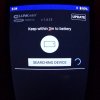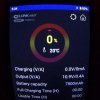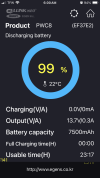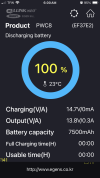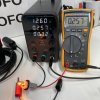Cold Temperature Charge Test
At the genius request on my man
@Lothar I decided to perform another one of my useless experiments is the name of Doc Brown.
I discharged the PC8 to 0% and recorded it’s “standing room temperature” at 61℉ (16℃). I then placed the PC8 in my freezer which is -11℉ (-23℃), (don’t tell my wife I used two of her good freezer bags).
After one hour on my wife’s hamhock I measured the temperature of the PC8 at 12℉ (-11℃). This is below the PC8’s listed operating specification 14°F - 158°F (-10°C - 70°C) however I only wanted to do this test once, so I let it be for another hour.
After two hours in the freezer I measured the PC8’s temp at 5℉ (-15℃) this is approximately a few degrees warmer than the blank stare of disbelief I received from my wife when she caught me red handed putting electronics in the freezer next to her leftovers. Satisfied this would be cold enough to perform my charge test I narrowly escaped her clutches on my way to the sanctuary of my garage.
I quickly set up the PC8 for a charge cycle by selecting the HIGH charge profile, and connected it to my Variable Power Supply and adjusted it to 14.6 Volts / 10 Amps to give it full beans. All ready to go the PC8 warmed up to 7℉ (-13℃), as I engaged the Variable Power Supply. Under normal temp conditions the current / amperage starts around 8 Amps, and climbs to 9 Amps. But this time something different happened. The amperage was rapidly fluctuating between 0.8 Amps to 1.6 Amps. I filmed a 60 second video showing this. I’ll put a link to the video at the bottom.
I checked in with the Cellink Neo Plus APP to see what the indicated temp of the PC8 was. At the start of the charge cycle it reported -4℉ (-20℃). After two minutes of charging it reported 6℉ (-14℃). After obtaining these test results I discontinued the charge cycle to let it reach thermal equilibrium with my garage ambient temp.
So what can we takeaway from this poorly created, and unscientific experiment? It appears the PC8 has a low temperature charging strategy that prevents it from charging at full amperage when it’s below the listed operating temp specifications.
I am currently banned from performing future PC8 experiments with my wife’s kitchen appliances. If anyone asks me to perform a high temp charge test by baking the PC8 in the oven at 350℉ for 45 minutes you will have to wait until my wife leaves to visit her mother for Thanksgiving.
-Chuck

